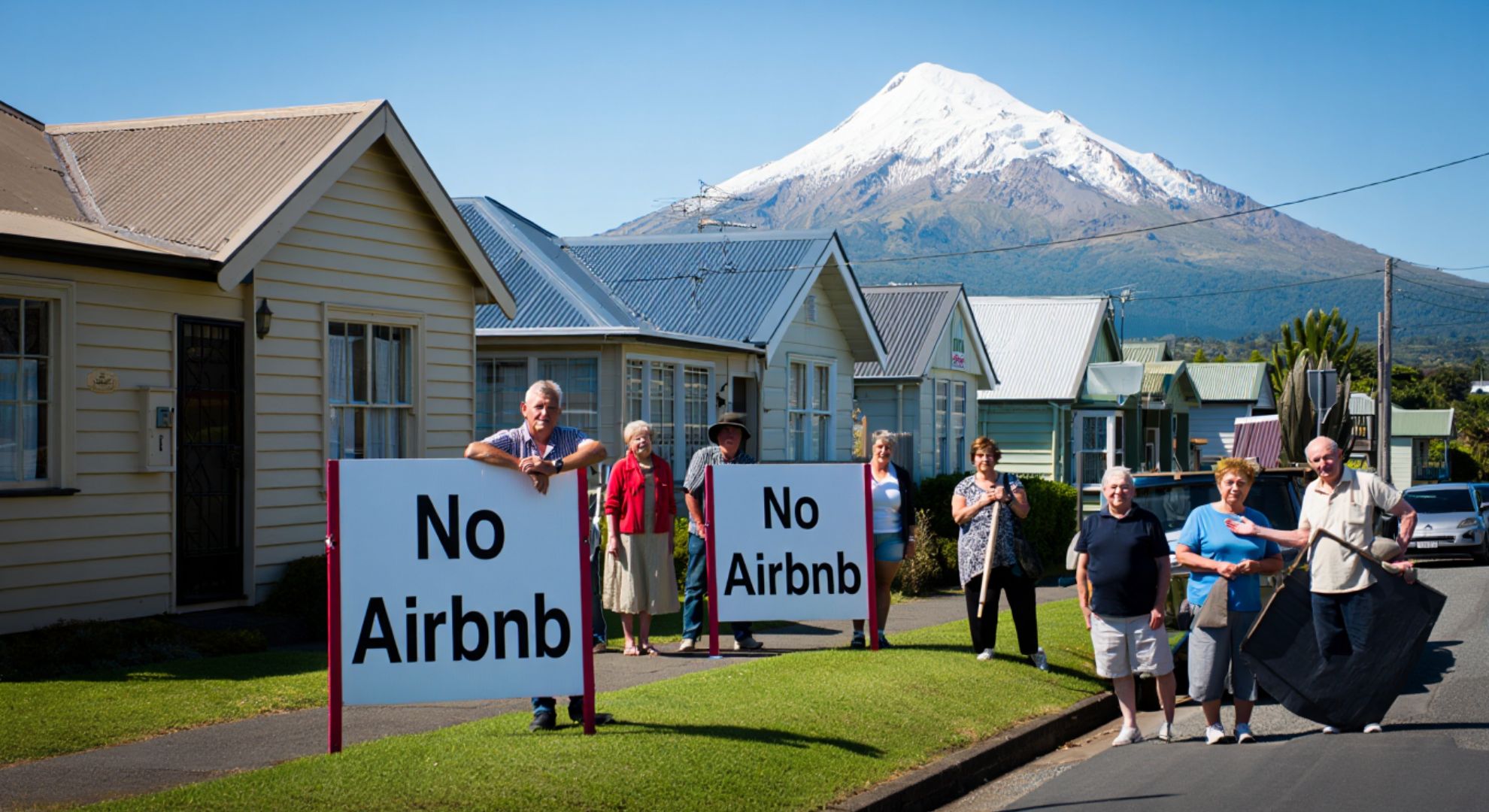A coastal community in Taranaki is wrestling with a hard choice. The housing crunch feels immediate, while visitor dollars feel fleeting. A proposed ban on short‑term rentals has turned kitchen‑table talk into council‑chamber debate. Neighbors speak in whispers, then in shouts. Everyone claims to love the place, yet not everyone agrees on how to protect it.
What’s driving the push
Rents have climbed steeply, and vacancy rates are tight. Essential workers say they’re priced out by high‑yield holiday listings. “I can’t find a lease within 30 minutes of the clinic,” says a local nurse, “but there are empty houses on weekends for visitors.”
Residents point to noise, parking squeeze, and “party‑house” drift. The town’s roads and water systems weren’t built for peak‑season surges. “We’re a community, not a revolving door,” says a longtime teacher. Others see a trade‑off that can be managed with rules rather than a hard ban.
What the council is weighing
The district is considering options from outright prohibition to capped permits. Staff are modeling impacts on rental supply, business takings, and neighborhood amenity. A legal review notes that zoning tools can limit short‑term stays without violating property rights. Enforcement remains the sticking point: complaints require officers, and officers require budget.
An Airbnb host argues for a middle path. “I rent my granny flat to pay the mortgage,” she says. “Take that away and I’ll have to sell the place.” A cafe owner counters: “Weekday sales have slumped as workers move out. Tourists don’t buy school uniforms or winter groceries.”
A snapshot of the trade‑offs
Below is a simple comparison of policy options the council is examining.
| Policy Option | Potential Benefits | Potential Drawbacks | Likely Beneficiaries |
|---|---|---|---|
| Full ban on short‑term rentals | More long‑term housing; quieter streets | Lost tourism spend; enforcement strain | Tenants and neighbors |
| Strict cap per neighborhood | Balanced visitor flow; predictable numbers | Complex compliance; potential loopholes | Mixed: residents and hosts |
| Primary‑residence‑only rule | Supports resident hosts; limits investor speculation | Hard to verify; fewer visitor beds | Local owners and workers |
| Nightly tax plus license | Funds infrastructure; formal oversight | Adds travel costs; may push to grey market | Council and community |
| Status quo | No admin burden; business as usual | Worsening rents; neighborhood wear | High‑yield hosts |
Economics versus belonging
Tourists bring cash, but cash can be loud. The median weekly rent has outpaced local wages for years. Short‑term listings often convert entire homes into weekend‑only assets. Each removed long‑term tenancy compounds pressure on families. Shops thrive on footfall, but a stable population spends through winter rain as well as summer sun.
Economists warn of leakage: profits funnel to offshore platforms, while maintenance costs stay local. Residents warn of erosion: fewer kids in classrooms, fewer volunteers on Saturdays. “When the lights are off midweek, the town feels hollow,” says a rugby coach.
What could change
If a ban or strict rules pass, the market will adjust. Some homes will return to long‑term leases, easing rent pressure. Visitor nights may decline, pushing hoteliers to refine offers. The council could redirect tourism toward shoulder‑season events. A tighter system could also reduce complaints, freeing staff for planning.
- Core measures on the table: caps per block, primary‑residence‑only letting, a nightly levy, data‑sharing for enforcement, and a two‑year sunset review
The human texture
Policy isn’t just paper. It’s the late‑shift caregiver driving an extra hour home. It’s the retired couple renting a room to meet rising rates. It’s the teenage barista saving for a first flat. “We’re not anti‑visitor,” says a local trustee. “We’re pro‑neighbors.” That framing has softened edges without dulling core concerns.
Airbnb has urged dialogue, citing small‑town hosts who rely on income. The platform’s statement calls for “smart regulation” and “fair rules.” Some residents nod; others roll their eyes. Trust is fragile, and compromise feels scarce.
What happens next
Councilors plan a public hearing after a month‑long consultation. Draft rules will face amendments, then a final vote. If adopted, they’ll roll out in phases with education and grace periods. If rejected, expect fresh pressure as rents keep rising. Either way, the town is choosing what it wants to be when the summer crowds drift home and the wind turns south.
For now, the streets stay quiet, but the conversation stays loud. The choice is less about tourism versus residents, and more about whose needs set the everyday rhythm of this small, stubborn place.

What town not mentioned in article
This is one of the most informative, well balanced articles that I have read. On any subject and in any publication, great job. I hope the residents can find a solution that works for them.
Why don’t you say the name of the town.
Ridiculious reporting!.
Hard to read, the way it is presented.
Not worth reading, does’nt tell you much at all.
Is this town Eltham? Or where?
Where the b fock is this? Not even a mention. Poorly written lacking basic facts
Shoddy journalism. What town is it?
Where in Taranaki is this place and what’s the suburb please
Why do you insist on leaving out the key detail in your articles? What is the fucking name of the town? This isn’t a one-off for you. You did it in a movie review article. And another article I forget the topic of (because you left out the key fucking detail), which I also commented on.
Seriously. What the fuck is wrong with you?
Well done for not naming the town. I think what you’re doing is raising a question which surely has an answer for this town where residents know who they are! It’s a question for our town too. Not telling which town it is had me reading to the end! Touche!